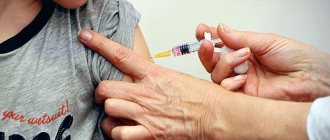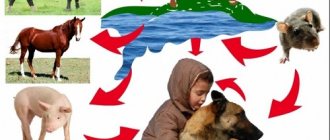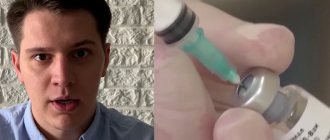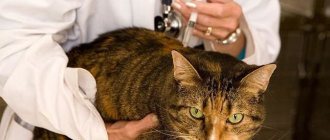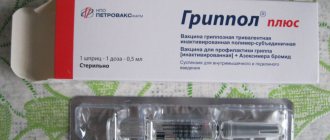Delivery
The veterinary pharmacy and pet store "Gomeovet" offers its clients a profitable cooperation scheme. If you need a specific drug or product of another kind, then you can call us at our contact numbers, after which we will find what you need. After that, we will call you back, and you can pick up your purchase in a way convenient for you - with delivery or yourself by visiting our store in Moscow.
Now you don’t need to waste your precious time calling dozens of pharmacies about the drug you are interested in. You just call us, and if the product is available in Russia and is certified, then we ourselves will find it for you and deliver it.
Delivery is possible using a courier, Russian Post (1st class) and the transport company SDEK.
- TC SDEK and Russian Post from 290 rubles
- Courier delivery in Moscow within the Moscow Ring Road and to any metro station - 300 rubles
- Courier delivery in Moscow up to 10 km from the Moscow Ring Road - 550 rubles
- Courier delivery in Moscow 10-20 km from the Moscow Ring Road - 800 rubles
- Courier delivery in Moscow 20-30 km from the Moscow Ring Road - 1200 rubles
Delivery outside the Moscow Ring Road (up to 10 km) will cost 550 rubles. It is possible to send goods to other regions of Russia and beyond, so please check this issue with our operators.
You can also pick up the goods yourself at our address: Moscow, st. Zamorenova, 25/5. Vet pharmacy and pet store. Working hours: Mon-Fri from 10-00 to 20-00. Sat-Sun from 11-00 to 20-00. Contact phone numbers: 8-800-302-301-7.
Equine influenza vaccine
INSTRUCTIONS FOR THE APPLICATION OF AN INACTIVATED POLYVALENT Equine FLU VACCINE (Approved by the Veterinary Department of the Ministry of Agriculture of the Russian Federation on April 12, 2004) 1. General provisions 1.1.
Inactivated polyvalent equine influenza vaccine is a pink liquid with a white precipitate of aluminum oxide hydrate, which, when shaken, easily breaks into a uniform suspension. 1.2. The vaccine is packaged in 5, 10, 20 cm3 in sterile glass vials or ampoules. The bottles are sealed with rubber stoppers and rolled with aluminum caps. The ampoules are sealed. A label or indelible paint is placed on bottles (ampoules) with the drug: the name of the manufacturer and trademark, the name of the drug, the batch number, the control number, the amount of the drug in cm3 and the expiration date. 1.3. Labeled bottles (ampoules) are packed in 10 pieces in boxes with dividing partitions or any other ensuring the immobility and integrity of the bottles (ampoules). 1.4. A label is placed on each box indicating the name and trademark of the manufacturer, the full name of the drug, batch number, control number, date of manufacture, expiration date, number of bottles in the box, storage conditions, number of cm3 and doses in one bottle, designation of these specifications . Each box contains instructions on how to use the drug. 1.5. If the vaccine contains foreign impurities, flakes, mold, discoloration, absence of a label, as well as bottles with the vaccine that have been frozen and remnants of the drug that were not used on the day the bottle was opened, the drug is rejected and subsequently disposed of. 1.6. The shelf life of the vaccine is 12 months from the date of manufacture at a storage temperature of 2 to 8o C. 2. Biological properties. 2.1. The vaccine is used for preventive immunization of horses. Young animals are vaccinated at the age of 3 months and older. Pregnant mares are immunized no later than 3 months before their foaling. Immunity in vaccinated animals occurs 14 days after the second vaccination. 2.2. The vaccine is areactogenic and harmless. 2.3. The drug does not cause post-vaccination complications and does not have medicinal properties. 3. Procedure for using the vaccine. 3.1. The first vaccination is carried out depending on age, the second - after 2-4 weeks. Vaccinated horses are exempt from work for three days. Subsequently, they are revaccinated once every 12 months. 3.2. Vaccination of sports horses is carried out no less than 7 days before they are tested at the hippodrome. 3.3. Horses with elevated body temperature or patients with acute respiratory diseases are not subject to vaccination. They are vaccinated two weeks after recovery. 3.4. The vaccine is administered intramuscularly in a volume of 1.0 cm3 in the middle third of the neck. Before use, vaccine vials are shaken until a homogeneous suspension is formed. Syringes and needles are sterilized by boiling; a separate needle is used for each animal. 3.5. Vaccinated animals are monitored for 7 days. Their health is monitored by a veterinarian, under whose supervision the vaccinations were carried out. Some horses (with chronic bronchitis, emphysema) may have a short-term (12-24 hours) increase in body temperature. 3.6. Slaughter products are sold without restrictions. 3.7. A report on the vaccinations performed is drawn up. 4. Procedure for filing complaints. If the drug does not meet the requirements specified in this manual, and there are complications after using the vaccine, the use of this series of the drug is stopped in accordance with the instructions of the Main Directorate of the Ministry of Agriculture of Russia dated May 8, 1992 No. 22-7/28 “On the procedure for filing complaints about domestically produced veterinary drugs and purchased by import”, report this to the manufacturer and to the All-Russian State Center for Quality and Standardization of Medicines for Animals and Feed (FGU VGNKI) (123022, Moscow, Zvenigorodskoe Shosse, 5). At the same time, three bottles of this series are sent to the Center by express mail to the institute. With the approval of this manual, the “Guidelines for the use of inactivated polyvalent equine influenza vaccine”, No. 13-4-2/964, approved by the Department of Veterinary Medicine of the Ministry of Agriculture and Food of the Russian Federation on May 27, 1997, is no longer valid on the territory of the Russian Federation. Veterinary Consultation
Consult with the Veterinary Encyclopedia
Cryodestruction - vaccination against cancer
Treatment of tumors without surgery and anesthesia
Payment
Convenient payment forms are available for our clients.
- In cash or using a bank card from any bank at our veterinary pharmacy at 123022, Moscow, st. Zamorenova, 25/5.
- In cash to the courier and using a bank card from any bank (only in Moscow and the Moscow region)
- By bank transfer to our company's account through any bank (when issuing an invoice);
- Through the online system of the site with bank cards through payment systems - WORLD - VISA International - MasterCard Worldwide
To pay on our website, you need:
- Wait for order confirmation
- Follow the link with the invoice for payment
- Remit payment
Please note that payment of the invoice constitutes your agreement to the terms of delivery. Preliminary payment is required, otherwise we cannot guarantee the availability of the products you are interested in in stock. You can pick up the goods only after funds have been received in the Supplier's bank account, if you have a passport, in any way convenient for you - with delivery to the address or pickup from our store.
Shipment of goods to regions of the Russian Federation, except Moscow and the Moscow region, is carried out from a warehouse in Moscow, so the order can be sent only after 100% prepayment.
Possible reasons for refusal to pay by card Before paying for your order on the website, please check the availability of funds on your card. The following reasons for refusal to pay for an order by card are also possible: You made a mistake when entering the card number, expiration date, CVV/CVC code; Your bank has set limits on the volume of payments made during the day; Your bank has prohibited payment transactions via the Internet; Your bank sees two identical debits (each donation is debited as a separate transaction) and considers this transaction to be an error. There are settings for the bank robot aimed at identifying fraudulent transactions and blacklisting IPs. If you have problems paying for your order by card, you need to contact your bank using the technical support number (usually 24/7) indicated on the back of your card.
Inactivated polyvalent vaccine against equine influenza (10 doses) 10ml
DESCRIPTION
Inactivated polyvalent equine influenza vaccine - for preventive immunization of horses.
COMPOUND
A mixture of inactivated equine influenza viruses of two strains: I serotype A/horse 1/Cambridge-63(H7N7) and II serotype A/horse 2/France-98(H3N8) and aluminum hydroxide. Packaged in 10 doses in sterile glass bottles or ampoules.
PHARMACOLOGICAL PROPERTIES
The mechanism of action of the drug is based on the development of immunity to the influenza virus in vaccinated horses. Immunity in vaccinated animals occurs 14 days after the second vaccination. The vaccine does not cause post-vaccination complications and does not have medicinal properties.
INDICATIONS
The indication for use is the need for preventive immunization of horses. Horses are vaccinated twice with an interval of 2–4 weeks. Foals are vaccinated from 3 months of age. The vaccine is not used in mares after 7 months of pregnancy. Vaccinated horses are exempt from use for 3 days. Subsequently, horses are revaccinated once every 6 months. Vaccination of sports horses is carried out at least 14 days before they are tested at the hippodrome. The vaccine is administered in compliance with the rules of asepsis and antisepsis intramuscularly in a volume of 1.0 cm3 in the middle third of the neck. Slaughter products are sold without restrictions.
DOSAGE
Horses are vaccinated twice with an interval of 2-4 weeks. Foals are vaccinated from 3 months of age. Vaccinated horses are exempt from use for 3 days. Subsequently, horses are revaccinated once every 6 months. Vaccination of sports horses is carried out at least 14 days before they are tested at the hippodrome. The vaccine is administered in compliance with the rules of asepsis and antisepsis intramuscularly in a volume of 1.0 cm3 in the middle third of the neck.
SIDE EFFECTS
When healthy animals are vaccinated, no changes in clinical condition are observed.
CONTRAINDICATIONS
The vaccine is not used in mares after 7 months of pregnancy. It is not allowed to vaccinate animals with elevated temperatures or those suffering from infectious diseases.
SPECIAL INSTRUCTIONS
No special precautions are required. Slaughter products are sold without restrictions.
SHELF LIFE AND STORAGE
The vaccine is stored in the manufacturer's packaging, in a dry, closed room at a temperature of 2-8°C. Shelf life – 12 months from the date of manufacture. If the integrity of the bottle is damaged, the label is missing, the color of the vaccine supernatant changes, or there is foreign matter or mold in it, the vaccine is rejected. It is prohibited to use a drug that has expired; rejected vials are rendered harmless by boiling for 15 minutes.
PACKAGE
Packaged in 10 doses in sterile glass bottles or ampoules of 10 ml.
Equilis Prequenza Te, flu/tetanus (1 dose)
Description
The vaccine induces an immune response to the causative agents of tetanus and equine influenza 2 weeks after a double dose. Post-vaccination immunity against influenza lasts for at least 12 months and against tetanus for at least 24 months.
The vaccine is harmless and has no medicinal properties.
Composition
One dose of the vaccine contains: 100 AE of equine influenza virus strain A/equine-1/Prague/56 (H7N7), 50 AE of equine influenza virus strains A/equine-2/Newmarket/1/93 (American serotype - H3N8) and A /equine-2/Newmarket/2/93 (European serotype - H3N8) and at least 30 units (40 flocculating units) of tetanus toxoid. The vaccine also includes: adjuvant - purified saponin, stabilizer - α-D-lactose monohydrate, components of buffer solutions - disodium hydrogen phosphate, dihydropotassium phosphate, sodium chloride.
Recommendations for use
The vaccine is administered to healthy animals in a volume of 1 ml (1 immunizing dose) deep intramuscularly into the neck area. Foals are vaccinated twice with an interval of 4 weeks, starting at 6 months of age. If early protection is necessary, it is allowed to begin immunization of livestock from 4 months of age. Revaccination of animals is carried out 5 months after the second administration of the vaccine. Subsequently, revaccinations are carried out once a year with one dose of the vaccine. In injured animals that have not previously been vaccinated against tetanus, the vaccine can be used simultaneously with anti-tetanus serum. The primary administration of the vaccine is carried out simultaneously with a prophylactic dose of tetanus toxoid serum in different areas of the neck. The vaccine is repeated twice with an interval of 4 weeks with 1 dose of Equilis Prequenza Te or other vaccines against tetanus. Mixing Equilis Prequenza Te with other vaccines in the same syringe is not allowed. Sterile needles and syringes are used for vaccination. The injection site is treated with 70º alcohol. There are no restrictions on the use of the Equilis Prequenza vaccine in pregnant or lactating mares. Some animals may experience a slight increase in temperature the day after vaccination. If the vaccine is not injected deeply, a slight swelling may form at the injection site, which spontaneously disappears within 2 days.
Storage conditions
Store and transport in original packaging in a dry place, protected from light, at a temperature of 2 to 8 ºС. The shelf life of the vaccine is 3 years from the date of manufacture. It is prohibited to use the vaccine after the expiration date.
How to avoid complications
As for complications, in general they are minimal, since modern production of biological products has made great progress, and vaccines have become more purified and safe. In general, in order to reduce all risks of adverse consequences to a minimum, you need to pay attention to the following:
- animals must be clinically healthy before vaccination;
- body temperature - within 37.5-38.5°C;
- there should be no signs of infectious diseases;
- there should be no signs of allergies, colic or other acute diseases;
- chronic diseases should not be in the acute stage (emphysema, etc.);
- the use of corticosteroids, antibiotics and other potent drugs should be discontinued in advance.
If, after vaccination, the horse is supposed to be given a rest for a couple of days, although this is not at all necessary, since most modern vaccines are well purified, contain a minimal amount of adjuvant and are tolerated by horses without any signs of illness, then this should necessarily affect the level of its feeding. This is especially true for concentrates (oats, porridge, muesli, etc.). During the rest period, it is advisable to, if not completely remove such foods from the diet, then at least significantly reduce their feeding rate (to 300-500 g per feeding). Otherwise, it would be inappropriate to blame the development of laminitis (rheumatic inflammation of the hooves) or paralytic myoglobinuria on vaccination.
